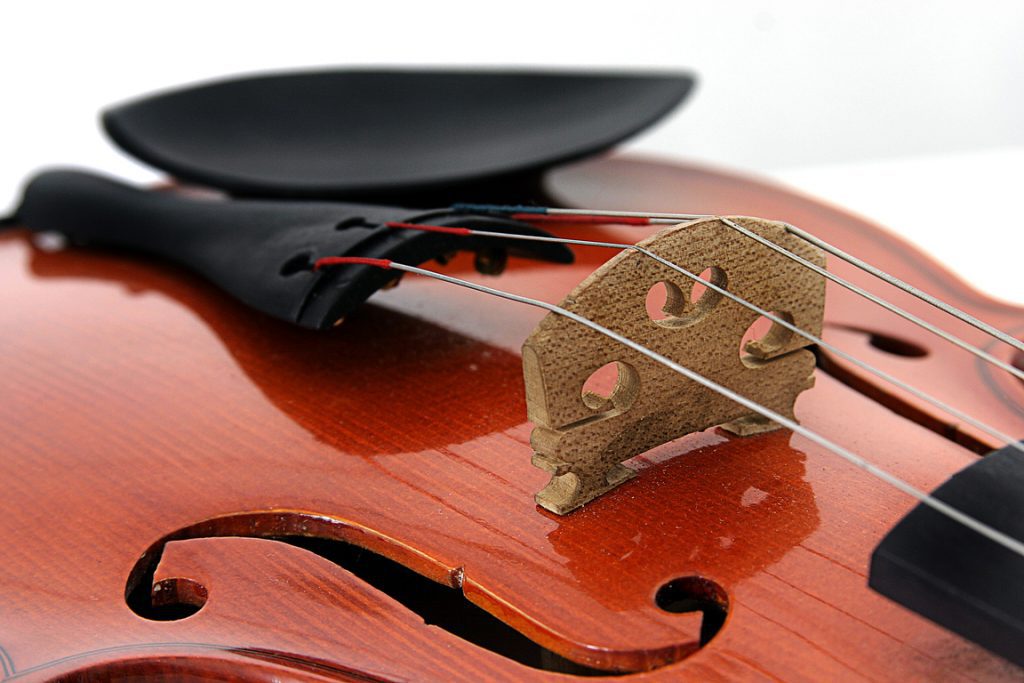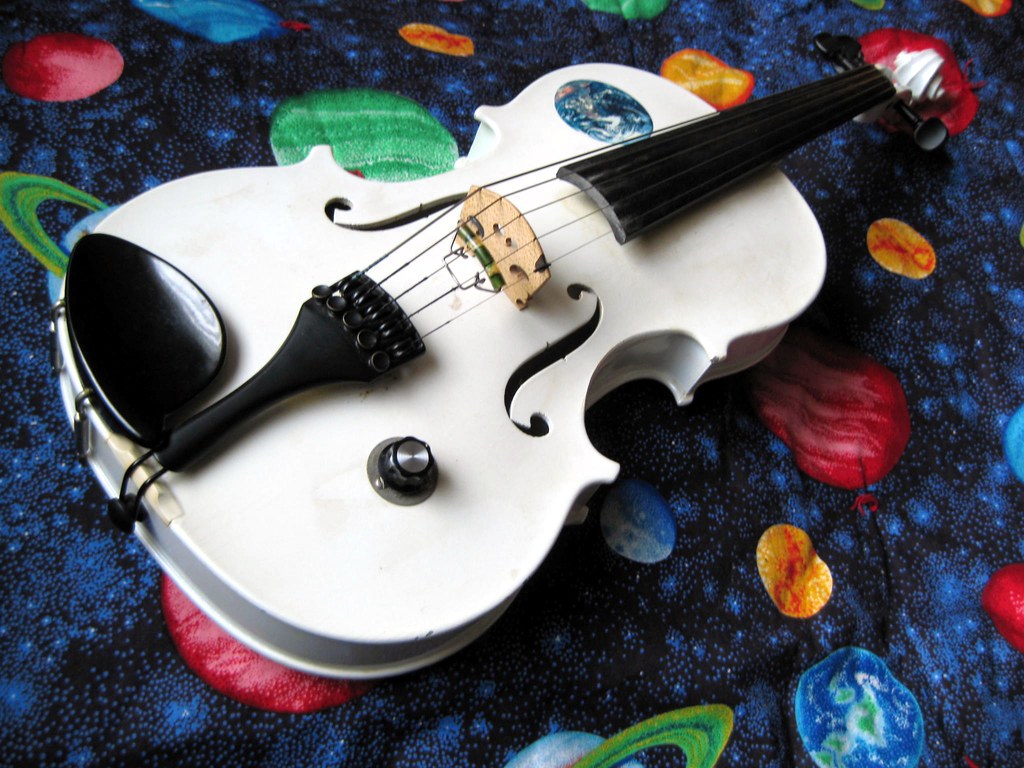Playing the violin is a rewarding and beautiful experience. It also requires precision and comfort for best performance. One essential accessory is the violin chinrest. The violin chin rest is a curved wooden material that gravitates the violin comfortably toward the chin and holds it in the optimal position. A chin rest consists of a bowl or plate to rest the chin and a hoop to secure this accessory to the body of the instrument. It is tight around the frame and doesn’t need to remove after playing. The chin rest is used with the violin to accomplish a natural and pleasant head position. This positively honors the free play of the instruments. Here’s a list of some of the best violin chinrest on the market-
The Best Violin Chinrests
| The Guarneri Violin Chinrest |  | Guarneri-style Ebony – crafted from the finest Indian woods Standard bracket Center mount Fits 4/4 Violin | Check on Amazon |
| The Flesch Violin Chinrest |  | Flat Flesch-style Ebony – crafted from the finest Indian woods Standard bracket Center mount Fits 3/4 and 4/4 Violin | Check on Amazon |
| The Dresden Violin Chinrest | 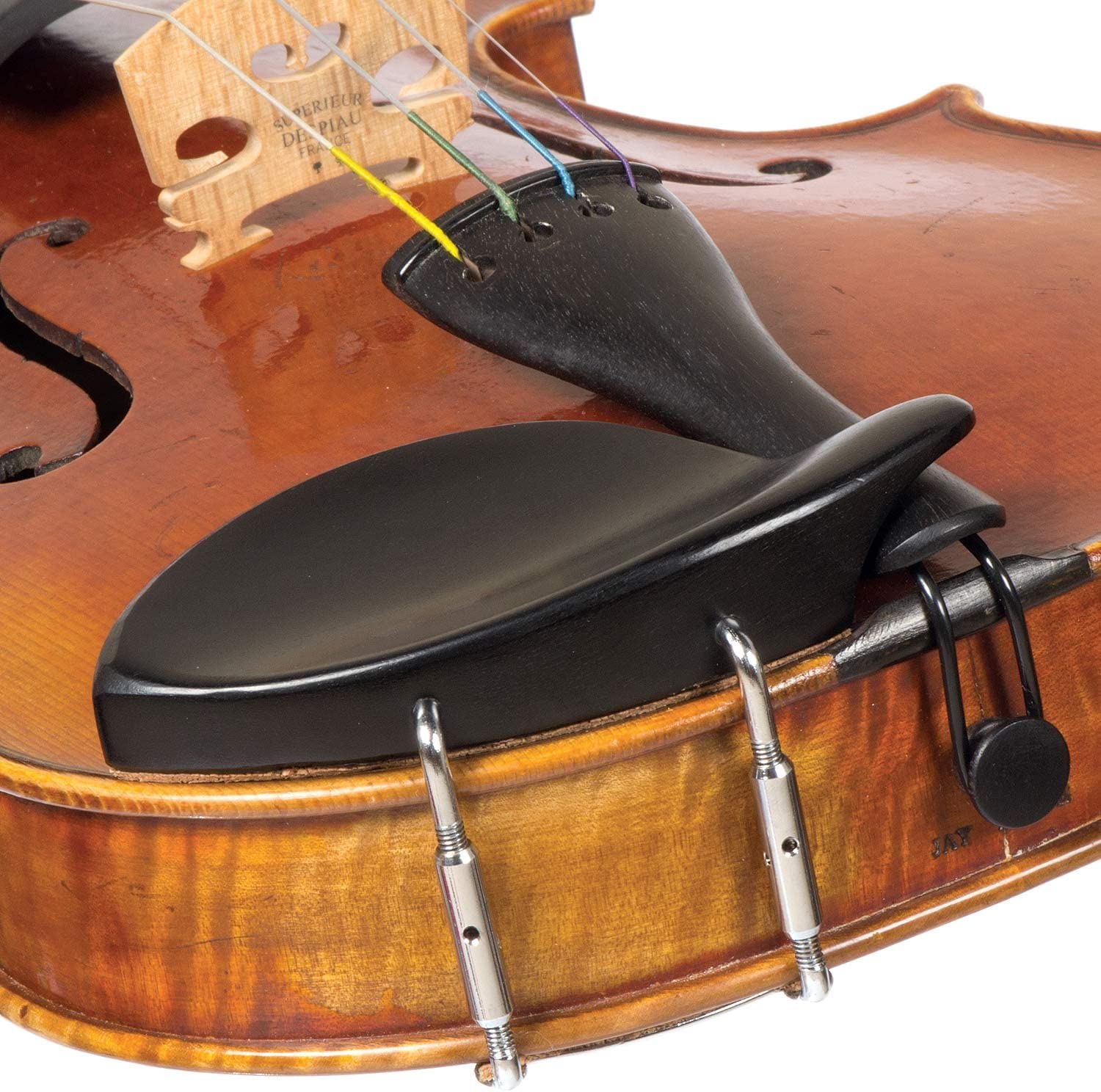 | Dresden-style Suitable for Violin 4/4 – 3/4 Material: Synthetic | Check on Amazon |
| The Kaufman Violin Chinrest | Fits 3/4-4/4 Violins or Viola Beautifully Crafted Ebony 32mm Plate Height Angle is adjustable A Torx Wrench Is Included | Designed for minimal height standard bracket side mounted 4/4 violin size is available ebony, rosewood, and boxwood Size- 1/8, 1/4, 1/2, 3/4 | Check on Amazon |
| The Morawetz Violin Chinrest |  | Certified Wood Origin Best fresh Portuguese cork Götz-Screws, round-closed Diligently crafted Suitable for a short neck | Check on Amazon |
| Wittner Composite Violin Chinrest | 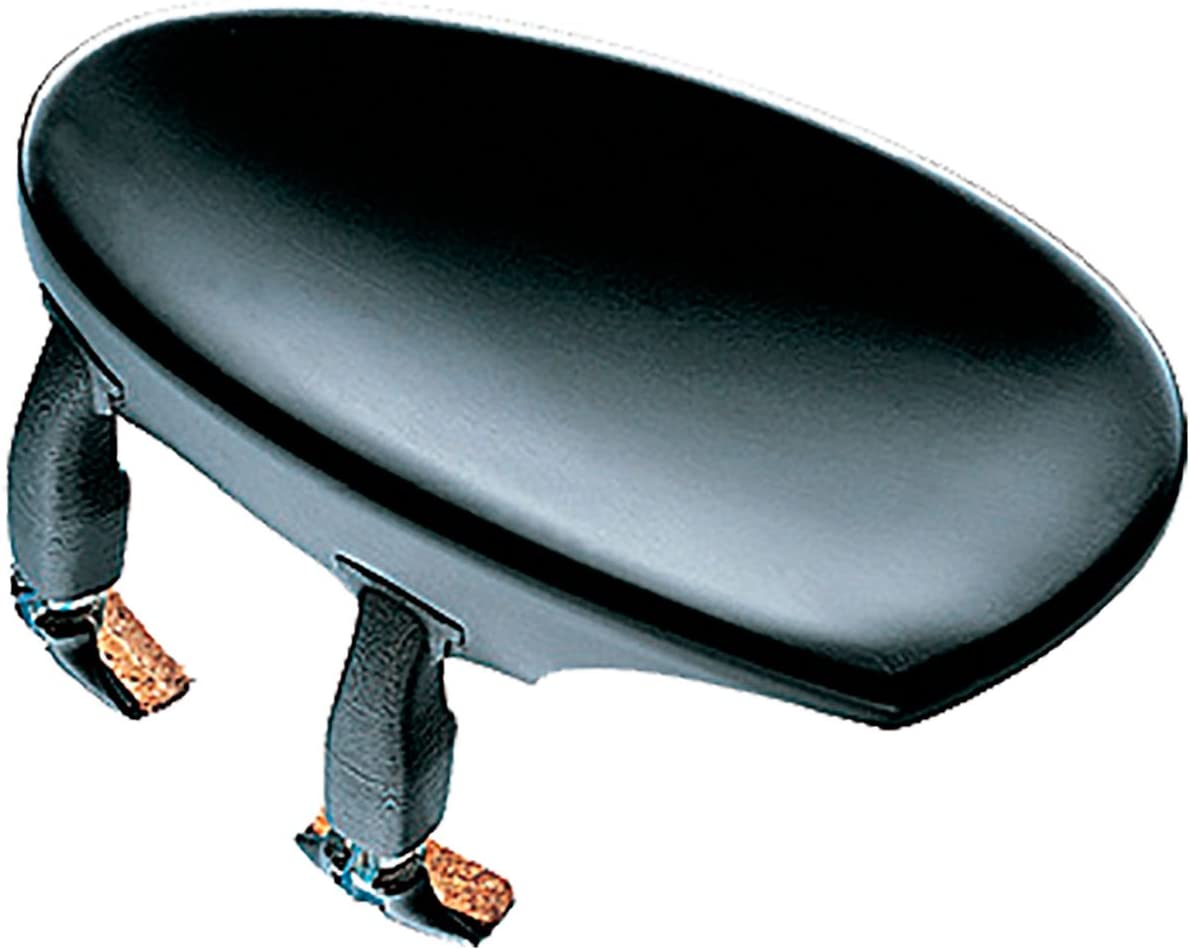 | Fits 3/4-4/4 Violins or Viola Beautifully Crafted Ebony 32mm Plate Height Angle is adjustable A Torx Wrench Is Included | Check on Amazon |
| SAS Ebony Chinrest For Violin |  | Fits 3/4-4/4 Violins or Viola Beautifully Crafted Ebony 32mm Plate Height Angle is Adjustable A Torx Wrench Is Included | Check on Amazon |
Types of Violin Chinrest
Mounting Positions of a chinrest could vary according to the player. The chin rests coupled to the body of the violins with a mounting system. Side mount, Over-the-Tailpiece, and center mount chin rests are available for violins.
Side Mount: This chin rests are mounted next to the tailpiece. These are suitable for people with short or normal necks.
Over-the-tailpiece: This chin rests are mounted above the tailpiece of a violin. But, they take the position to the side of the violin.
Center Mount: The center mount chin rest is mounted to the back of the violin tailpiece. It situates just above the violin tailpiece. As the clamp is supported by the bottom or lower block, it is the safest of the three options.
Features of The Best Violin Chinrest
You must take enough time to consider some unavoidable features and qualities of the chinrest that you want to own. Check out the following elements before deciding which chinrest is best for you.
Comfort
Comfort is one of the most important considerations for a chinrest. There are different sizes of chinrests for different jaw shapes, choose the one that is comfortable for you. Some models feature padding and memory foam for utmost comfort. Another comfortable chinrest uses foam and stretch material that hugs your face and neck.
Material
The quality and performance of a product depend on the materials used in the product, the same goes for chinrests. Usually, it is made of wood and plastic. Also, many other materials are added like microfiber, polyester, memory foam, nylon, cotton, etc. Mixing different types of materials is relatively good.
Size
There is no universal scale for chinrests, find your own based on your jaw shape and size. The size you choose for your violin’s chinrest depends on the shape and size of your jaw. There are a variety of options available to you, regardless of your jaw size or structure. Finding the model that suits and fits you.
Portability
Portability is another notable feature of a chinrest. It should be possible to carry it with the violin. It is difficult to disassemble your violin chin rest every time you need to pack it in your violin case and it’s unnecessary. Many violin cases are designed to fit violins with a variety of chin rest sizes.
Durability
Sustainability is a kind of scale for measuring product quality. Although you don’t know about the durability of the product before using it the product can be more durable based on the material of the product and how carefully you use it. The chinrest of the violin has metal components in its bracket, so keeping moisture away from your violin’s chinrest will prevent its braces from rusting. Cleaning the chinrest regularly will also protect its coating.
Price
Price is one of the most effective factors in buying something. Based on the materials used and their mounting structure, the price of violin chinrests varies. Chin rests made of plastic are comparatively cheap. The wooden chinrests are of high quality and have gold-plated mounting brackets. The average price of a chin rest lies between 10$ and 50$.
History of Violin Chinrest
In the early 19th century, around 1820, the invention of the chinrest happened. German musician, composer, and violinist Louis Spohr invented the violin chin rest. His primitive design of the chin rest required a small block of wood to be centered on the tailpiece. Ironically, Spohr did not want to shield a violinist’s chin. Rather, it was trying to protect the violin tailpiece itself, which could crack if the player applied too much pressure. Cause before this, musicians held their instruments under their chin with the skin touching the surface next to the tailpiece. Therefore, protecting the violin is one of the simplest functions for the chin rest. Over the years, the chin rest has evolved from the small flat device that resembles a great device today, diverse in various styles and sizes.
Understanding the Importance of a Chinrest
The violin chinrest serves as a crucial support system. It allows the violinist to maintain a stable position while playing. It helps prevent discomfort and strain on the neck and shoulder muscles, enabling longer practice sessions and performances without fatigue. Moreover, a well-fitted chinrest improves the overall control and balance of the violin, influencing the quality of sound produced.
What Is A Chinrest Made of?
There are many variations in chinrest models. The manufacturer can use several materials for making the bowl. Although wood is the most common for making chinrest. Plastic is also used. Since there are many varieties of wood such as-
- Ebony
- Boxwood
- Rosewood
- Sono wood
Most chinrests are made of ebony for their durability, although this is the hardest. Boxwood and rosewood are the softest but less sustainable. There are slight differences in weight and comfort between these woods that do not affect the sound of the music. Everyone chooses their chinrest depending on their ease and preferences.
Caution: A skin irritation called fiddler’s neck is caused by bacteria that can live on the wood.
If someone suffers from allergies, they can find hypoallergenic rests made of plastic. Plastic chinrest hypoallergenic is outstanding for those whose skin reacts badly to wood. Beginner violins often have plastic chinrests which can sometimes be more pleasing than wooden ones.
Criteria for Selecting The Best Violin Chinrest
Depending on multiple body types and playing styles different chinrests suit different players. As chinrests are for chin comfort, it’s important to choose the optimal shape that’s more comfortable to hold the jaw. Height and comfort should be in mind when selecting a chinrest. There are various factors to consider-
- Ensure the most comfortable playing position for the player
- Adjust the chin position on the instrument, where you feel most comfortable playing. It can be the middle or side.
- Determine what shape rest will fit your jaw. Every person has a unique shape and width of their jaw which can affect choosing the best rest for them.
- Determine the height of the chinrest that will suit you. Measuring the height between the body of the violin and your jaw while holding the violin in the playing position.
The shoulder rest must be on your violin for a shoulder rest user. Intend the material you would prefer for your chinrest. There are different types of chinrests. Wood and plastic are most common for making chinrests. Some woods are unsustainable. Some provide less comfort.
TIP: Suppose you have a larger jaw, you may feel more comfortable with a larger chin rest with a more curved design. If your jaw has more flesh, you may be okay whit a flatter-shaped chin rest, which allows the jaw to sit on top of the chin rest. Likewise, if your jaw is small, you may pick a smaller chin rest that holds your jaw tightly.
Setting Up Your Chinrest Properly
Proper installation and setup of the chinrest are vital to ensure maximum comfort and functionality. Follow these steps for a hassle-free setup:
Step 1: Loosen the Clamp: Loosen the chinrest clamp using the provided screw and position it on the violin’s side where you feel the most comfortable and secure.
Step 2: Align the Chinrest: Ensure that the chinrest aligns with your jawline when you rest your chin on it. Make any necessary adjustments to achieve the right fit.
Step 3: Tighten the Clamp: Once you have positioned the chinrest correctly, tighten the clamp securely, so it stays in place during your practice and performances.
The Guarneri Violin Chinrest
Guarneri chinrest is named after a prominent family of luthiers from the Italian city of Cremona. This is the most common chin strap that fits the average player comfortably. It is center mounted with the chin bowl on the left side of the tailpiece. And has a leg or tail above the tailpiece. Guarneri 4/4 Violin Chinrest – Ebony with Standard Bracket is one of Guarneri’s most popular models. Some of its amazing features are as follows:

- Guarneri-style
- Ebony – crafted from the finest Indian woods
- Standard bracket
- Center mount
- Fits 4/4 Violin
The Flesch Violin Chinrest
This very popular center mount chinrest was invented by and named after Hungarian violinist Carl Flesch. This features a cupped chinrest centered over the tailpiece, much like Spohr’s original. Following are the popular model of Flesch chinrest. Flat Flesch 4/4 Violin Chinrest – Ebony with Standard Bracket
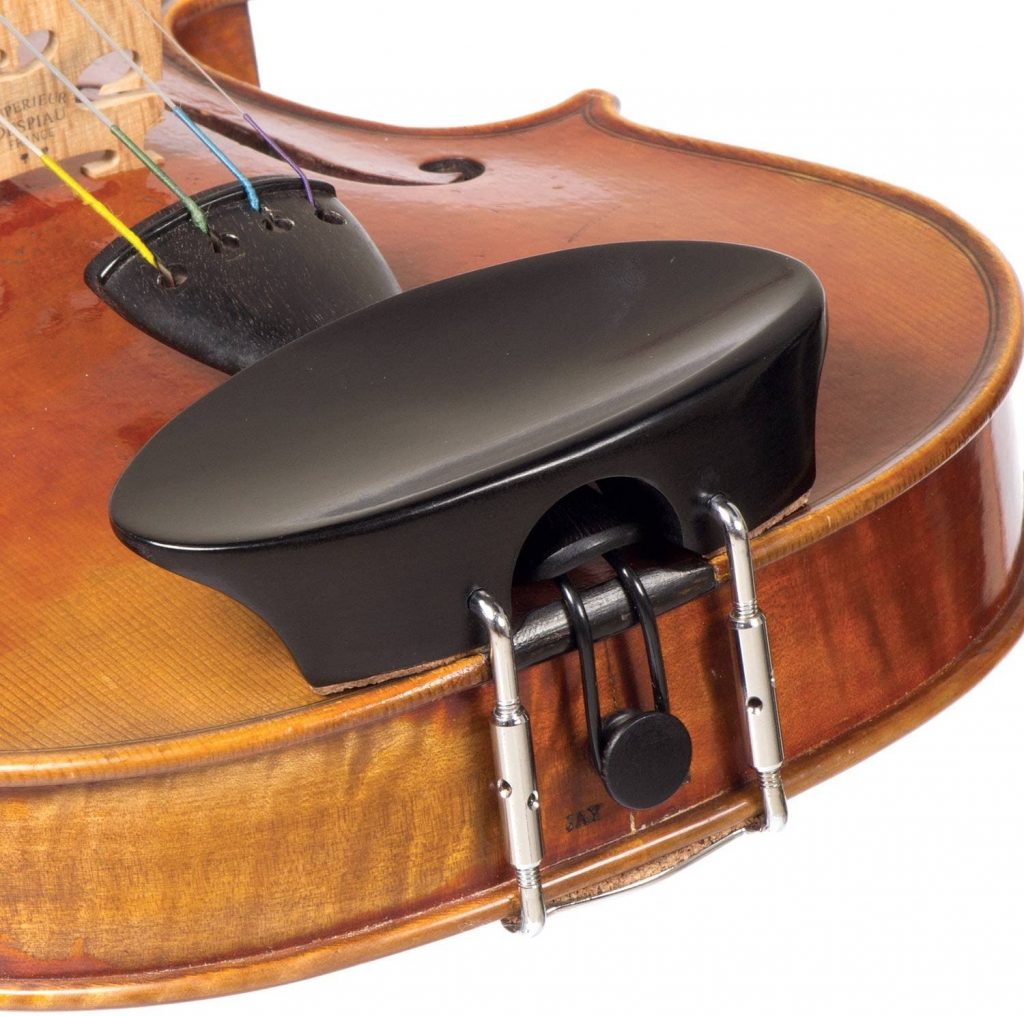
- Flat Flesch-style
- Ebony – crafted from the finest Indian woods
- Standard bracket
- Center mount
- Fits 3/4 and 4/4 Violin
The Dresden Violin Chinrest
For the actual chin, flat simple chinrest mounts on the left side of the violin with a contour cup to give some stability. Many players find it very pleasant. A model of this violin chinrest is GEWA Chin Rest “Dresden” for Violin 4/4-3/4
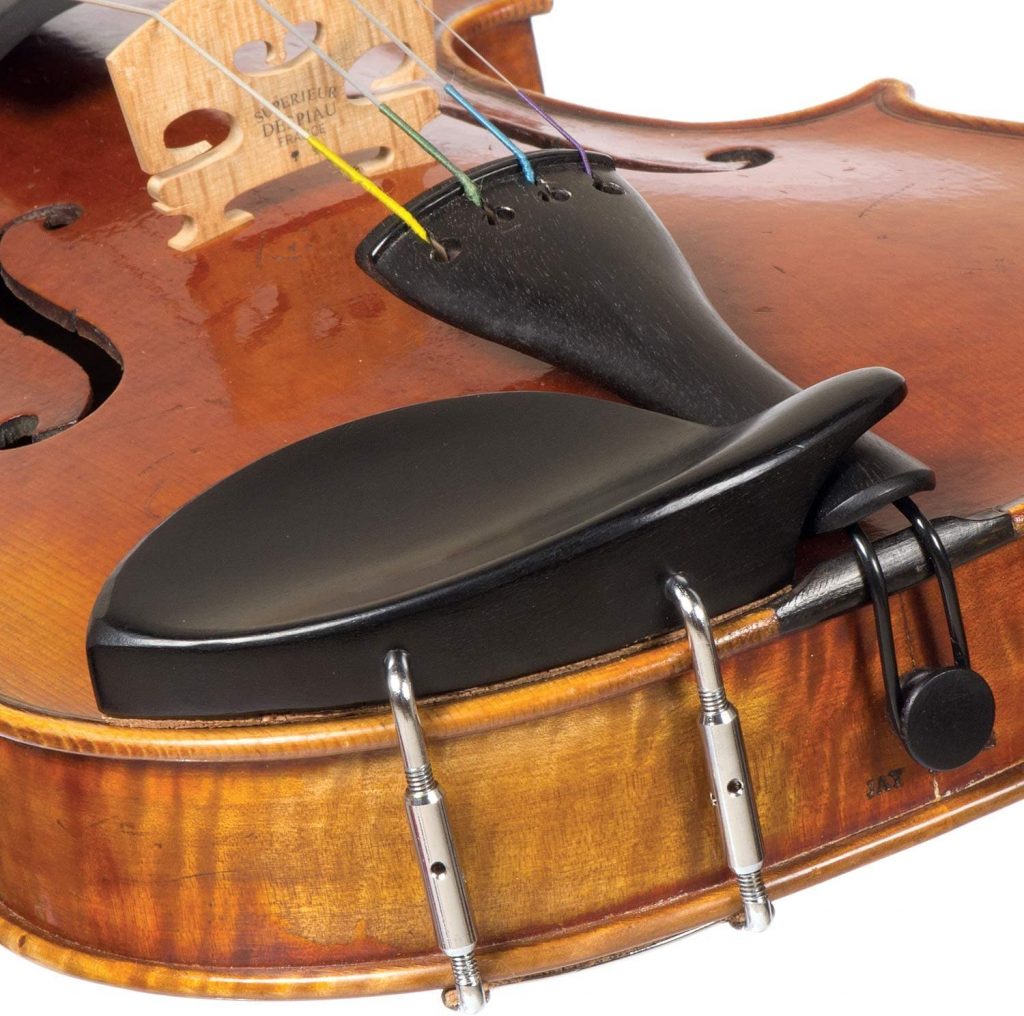
- Dresden-style
- Suitable for Violin 4/4 – 3/4
- Material: Synthetic
The Kaufman Violin Chinrest
This chinrest mounts on the left side of the tailpiece and has a bottom rest with a shallow cup. On the other hand, you can adjust the position so that it is above the tailpiece or to the side. Original Götz Slim Style Flat Kaufman Violin Chinrest is best at it. Some of the features of a Kaufman chinrest are as follows.
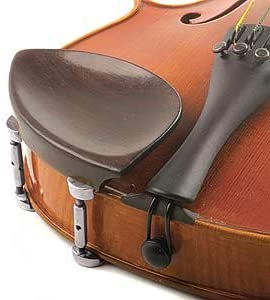
- Designed for minimal height
- standard bracket
- side mounted
- 4/4 violin size is available
- ebony, rosewood, and boxwood
- 1/8, 1/4, 1/2, 3/4 violin sizes are available in ebony
The Morawetz Violin Chinrest
Its main feature is the lateral attachment which provides a fastening directly on the ribs positioned above the tailpiece and slightly overlapping. This allows you to comfortably place your chin on the side of the tailpiece. People with small jaws or children will prefer it over larger models. A chinrest of Morawetz is, Morawetz Chinrest Violin 4/4 in Ebony.

- Certified Wood Origin
- Best fresh Portuguese cork
- Götz-Screws, round-closed
- Diligently crafted
- Suitable for musicians with a short neck
There are also many compatible chinrests in many styles. Let’s see some of their features.
Wittner Composite Violin Chin Rest
A preferable choice for violinists of all ages and skill levels. It’s hypoallergenic. Mount the chinrest on the side of the violin. So, it can easily be attached to the left of the tailpiece. The composite material of this chinrest is ideal for many people. It won’t break like wood, so it can be used for a long time. A well-known model of this chinrest is discussed below.
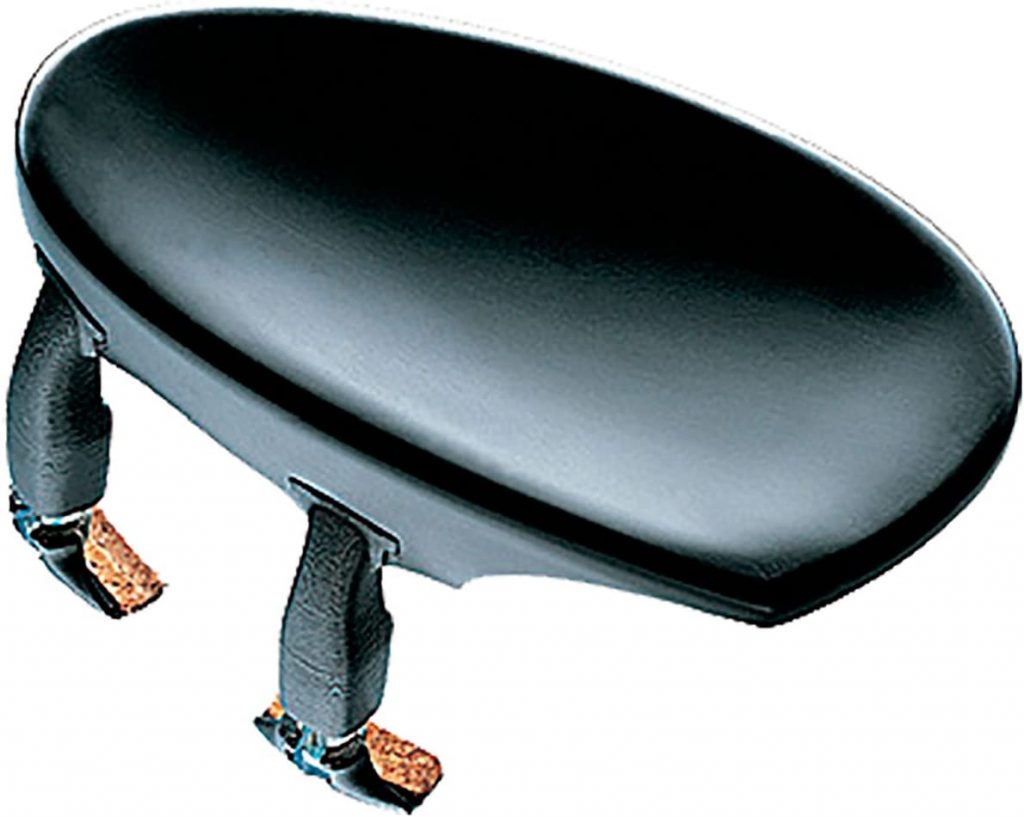
- Non-allergenic
- String Material- Nylon
- Product Weight- 1.6 ounces
- Product Dimensions- 3.3 x 1.18 x 6.49 inches
- Size 4/4
- Manufactured in Germany
SAS Ebony Chinrest For Violin
The SAS violin chinrest of the ebony chinrest ensures total comfort and pleasure for the musician during his performance. It is also recommended for allergy sufferers as the materials it uses are natural without varnish or chemical products. Its unique design allows adjusting the angle of the chin rest about the violin. Fits on the tailpiece or left of the tailpiece. One of its most popular chinrests is as follows. SAS Ebony Chinrest for 3/4-4/4 Violin or Viola with 32mm Plate Height and Gold-plated Bracket
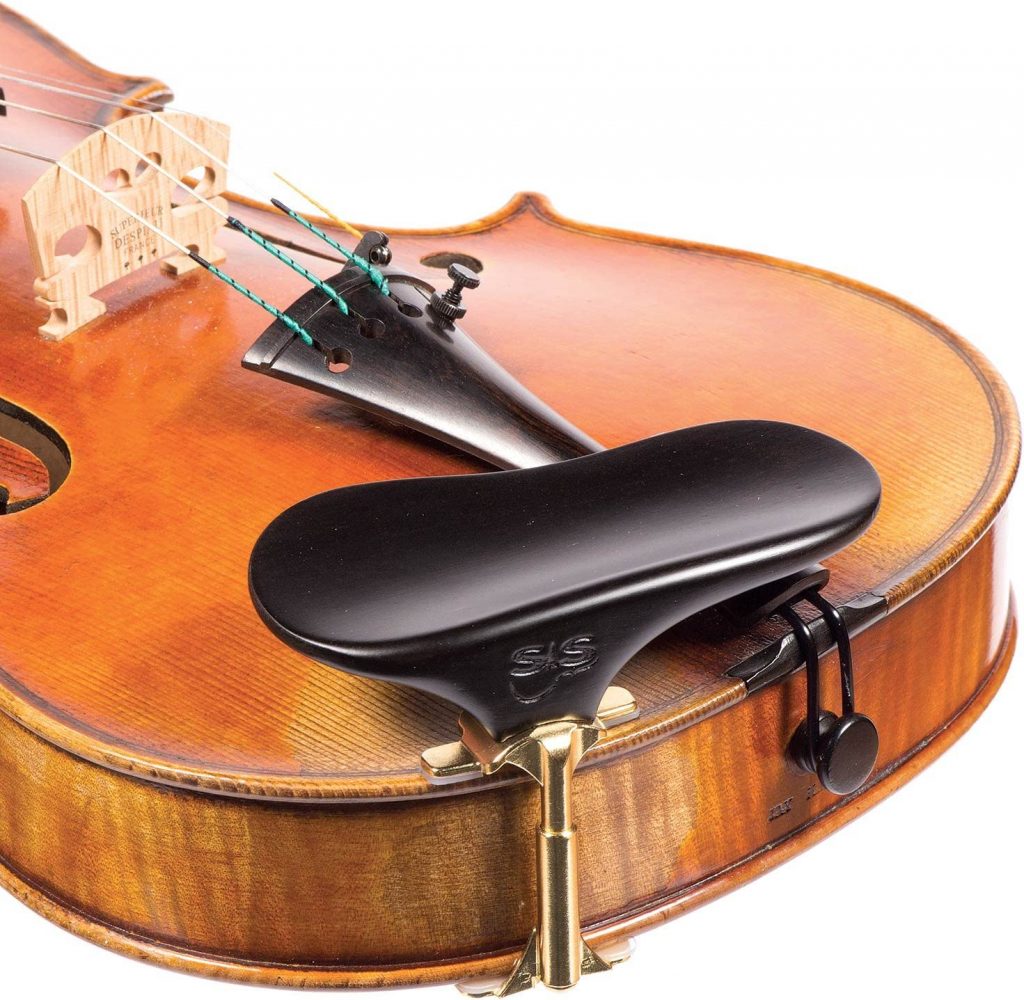
- Fits 3/4-4/4 Violins or Viola
- Beautifully Crafted Ebony
- Elegant Gold-Plated Single Barrel Bracket
- 32mm Plate Height
- Angle Adjustable to The Instrument
- A Torx Wrench Is Included
- Natural non-varnished wood
Conclusion
Who doesn’t like comfort? Maybe you can do better with the violin when you feel more comfortable while sometimes you can’t do your best when you feel uncomfortable. Chinrest is the ultimate gadget that can provide absolute pleasure. It is possible to play the violin without a chinrest. But one thing should be noted, “Playing the violin without a chin rest gives the impression of sleeping without a pillow”
Author: Classical Beast
Other Posts

